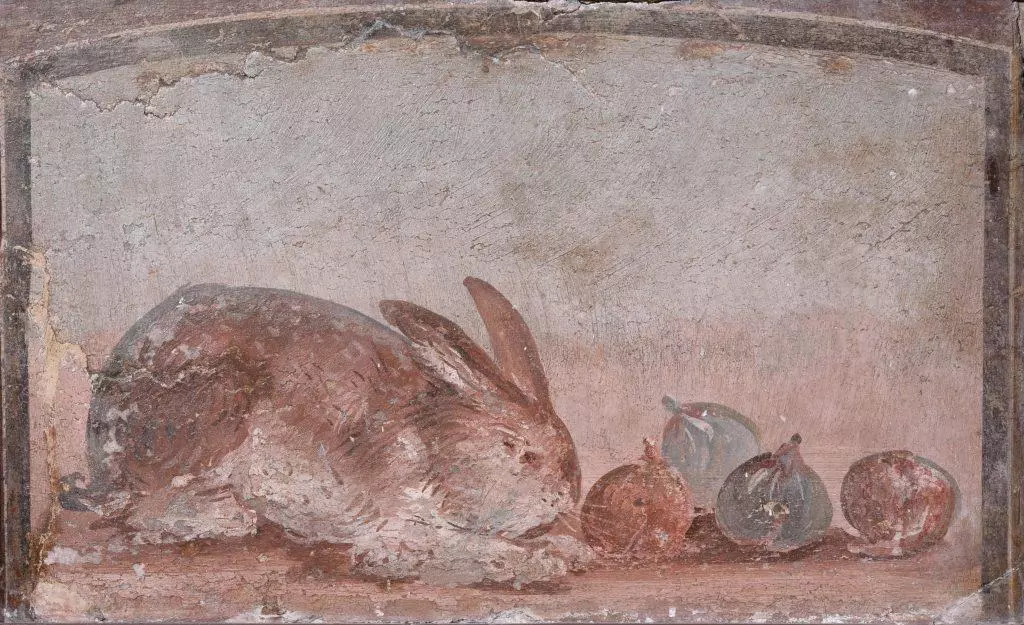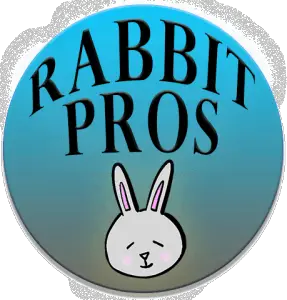Disclosure: We may earn money or products from the companies mentioned in this post.
As a proud owner of a pet rabbit, I find the history of rabbits as pets fascinating. For thousands of years, rabbits have been valued for their meat, fur, and as a symbol of fertility. However, it wasn’t until the late 19th century that rabbits became popular pets in Western culture.
One of the earliest references to pet rabbits dates back to ancient Rome, where rabbits were kept in captivity as a source of food and for their fur. The Romans also bred rabbits selectively to produce specific traits, such as larger size or better fur quality.

Ancient Roman References To Pet Rabbits
There are references to pet rabbits in ancient Roman literature and art. Rabbits were kept in captivity as a source of food and for their fur, and were also selectively bred for specific traits.
One notable example of a pet rabbit in ancient Roman literature is the story of Julius Caesar and his beloved pet rabbit. According to legend, Caesar was once given a pet rabbit by a Gaulish chieftain as a gift. Caesar was so taken with the rabbit that he named it after himself and took it with him on his travels. The rabbit was said to have been well-cared for and lived a long life, even after Caesar’s death.
The exact year when Julius Caesar was given a pet rabbit is not known, as it is a legend and there are no historical records that provide a specific date. The story of Caesar and his pet rabbit is part of Roman folklore and has been passed down through the centuries. However, it is believed to have taken place during Caesar’s conquest of Gaul (modern-day France) in the 1st century BC.
There are also several depictions of pet rabbits in Roman art. For example, a fresco from the Villa of the Mysteries in Pompeii shows a young girl holding a pet rabbit. The rabbit is depicted as being small and fluffy, with a round head and long ears.
Additionally, there are references to rabbit breeding in ancient Roman literature. The Roman writer Columella wrote about the breeding of rabbits in his agricultural treatise, “De Re Rustica”. He discussed the use of breeding to produce rabbits with larger size and better fur quality, as well as the use of selective breeding to create new breeds.
Domesticated Rabbits In the Middle Ages
During the Middle Ages, rabbits were kept in small cages and used for food and fur. However, the upper classes began to keep rabbits as pets, with some even going so far as to build elaborate rabbit gardens or warrens. These gardens were often designed with ornate structures and landscaping and were filled with rabbits of various breeds.
The History Of Rabbit Gardens For Pet Rabbits
Rabbit gardens, also known as warrens, were once a common feature of aristocratic estates in medieval Europe. These gardens were designed specifically for the breeding and keeping of rabbits, which were valued for their meat, fur, and as a symbol of fertility.
The earliest rabbit gardens are thought to have originated in France during the 12th century. These early warrens were typically small, with a few hutches or cages for keeping rabbits. However, as the popularity of rabbit breeding and keeping grew, so did the size and complexity of rabbit gardens.
By the 14th century, rabbit gardens had become more elaborate, with networks of underground burrows and tunnels that were designed to allow the rabbits to move freely between different areas of the garden. These gardens were often located in wooded areas or near streams, which provided the rabbits with a natural habitat and a source of food and water.
During the 16th and 17th centuries, rabbit gardens became increasingly fashionable among the European aristocracy. Many estates featured large, ornate warrens with multiple levels and intricate tunnel systems. These gardens were often designed to be visually appealing as well as functional, with features such as fountains, statues, and decorative plants.
In addition to their aesthetic appeal, rabbit gardens were also used for practical purposes. They provided a source of fresh meat and fur for the estate, and the rabbits were often used for hunting or as gifts for visiting dignitaries.
Despite their popularity among the aristocracy, rabbit gardens began to decline in the 18th century, as rabbits became more widely available and new methods of rabbit breeding and keeping were developed. Today, very few rabbit gardens survive, and those that do are often located in museums or historical estates, where they provide a glimpse into the rich cultural history of rabbit breeding and keeping.
Modern Rabbit Gardens
While the term “rabbit garden” typically refers to the historic practice of keeping rabbits in enclosed gardens or warrens, there are modern variations of this concept that have evolved over time.
One modern approach to rabbit keeping that is similar in some ways to a traditional rabbit garden is the creation of a large, outdoor enclosure where rabbits can move and play freely. These enclosures can include features such as tunnels, hiding places, and natural elements like plants and rocks to create a stimulating environment for the rabbits.

Another modern approach to rabbit keeping is the creation of indoor habitats or “rabbit rooms” where rabbits can roam free within a designated space in the home. These habitats can include features such as toys, tunnels, and hiding places to provide a stimulating environment for the rabbits.
While these modern approaches to rabbit keeping differ from the traditional concept of a rabbit garden or warren, they share the goal of providing a safe and stimulating environment for rabbits to live in. Whether they are kept indoors or outdoors, modern rabbit habitats prioritize the health and well-being of the animals, while also providing a fun and engaging environment for their human companions to enjoy.
19th Century Pet Rabbits
It wasn’t until the late 1800s that rabbits became popular as pets in Western society. At this time, breeders in England began to selectively breed rabbits for specific traits, such as size, color, and temperament. This led to the development of many new rabbit breeds, including the popular Rex, Dutch, and Mini Lop breeds.
Today, rabbits are one of the most popular pets in the world, with millions of households owning one or more rabbits as pets. As an owner of a pet rabbit myself, I can attest to their intelligence, affectionate nature, and ease of care. Rabbits make wonderful companions and are known for their social, curious, and playful personalities.
However, owning a pet rabbit also comes with its challenges. Rabbits require a specific diet, as they are herbivores and need a diet high in hay, fresh vegetables, and a small amount of pellets. They also need adequate space to exercise and explore, and a safe, clean living environment. Regular veterinary care is also essential to keep them healthy and happy.
Despite the challenges, owning a pet rabbit is a rewarding experience. They make great indoor pets, and are easily litter box trained. Rabbits are also excellent companions for children, as they are gentle and generally enjoy being held and cuddled.
In conclusion, the history of rabbits as pets is a rich and fascinating subject that spans centuries. From their early days as a source of meat and fur, to their more recent popularity as beloved companions, rabbits have had a special place in our hearts and homes for a long time. As an owner of a pet rabbit, I feel fortunate to be part of this rich history and look forward to many more years of companionship with my furry friend.
